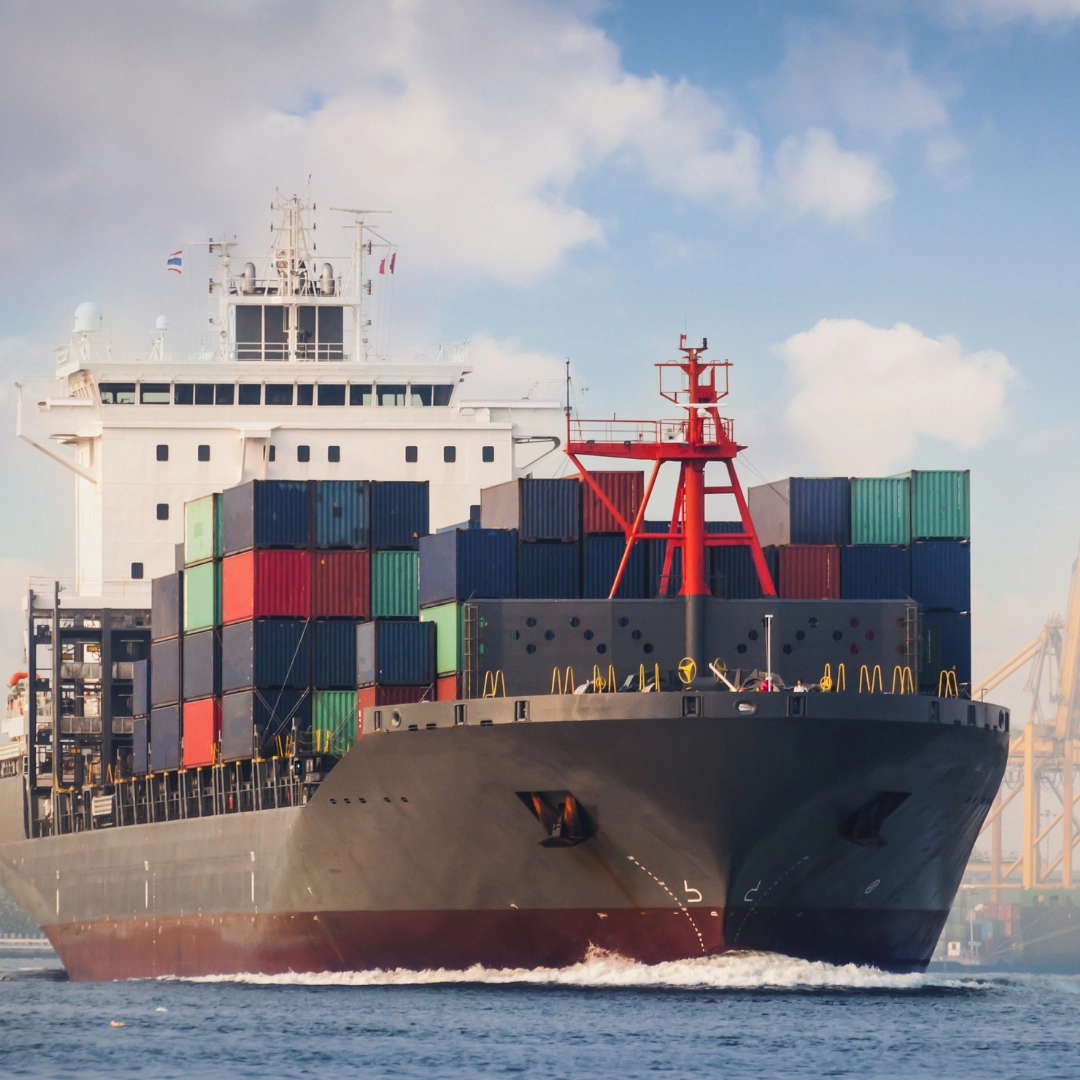International shipping
International shipping in a new dimension - Ask about our prices from your future precision shipping partner!
Fast, accurate, reliable logistics services to any point in the world!
International shipping is a method of transporting goods from one country to another. The aim is to deliver goods safely, quickly, efficiently, and cost-effectively from the sender to the recipient, considering legal, customs, commercial, and logistical aspects.
Our expert team provides the highest standard of precision logistics, whether for air, sea, rail, or road transportation. We meticulously design every aspect of the logistics process to ensure that your goods arrive at their destination swiftly and efficiently. We stay attuned to industry trends and can proactively anticipate changes, ensuring that you are always prepared.
- 24/7 availability
- Complete transparency
- Customer-centric approach
- High level of security
Logistical solutions that arise during international shipping
Different countries impose varying regulations and requirements regarding imported and exported goods. At INCON-LOGISTIC, we possess up-to-date knowledge of the customs and legal regulations of various countries, ensuring our clients that their shipments comply with the specific requirements of each destination. With our expertise, you can avoid delays and penalties that may arise from improper documentation or non-compliance with regulations.
At INCON-LOGISTIC Ltd., our business practices are designed to minimize the environmental impact of our domestic and international shipping operations. By reducing environmental burdens while enhancing efficiency, we create opportunities for all of us to make logistics more sustainable.
INCON-LOGISTIC is equipped to securely transport goods that require cooling or heating, including temperature-sensitive items. We possess specialized expertise, qualifications, and partnerships related to the unique shipping methods and packaging solutions necessary for handling fragile or hazardous goods. To provide comprehensive service to our clients, we are ready to address such tasks with trained professionals and tailored solutions.
Customized solutions for unique requirements. Specialized shipping involves the transportation of goods that are oversized, heavy, irregularly shaped, or require special handling. This can include overweight or oversized equipment, industrial structures, large components of oversized machinery, buildings, bridges, or other significant construction elements. The transport of such goods demands specialized preparation, as it can only be conducted with the proper permits and adherence to specific regulations.
INCON-LOGISTIC holds all necessary certifications to transport hazardous materials. We are equipped to handle the transportation of goods that may pose risks to human health, the environment, or property, such as flammable, explosive, or infectious substances. The transportation of hazardous goods requires adherence to specific regulations, permits, documentation, and equipment, as even the smallest oversight or negligence can lead to serious consequences.
INCON-LOGISTIC’s luxury logistics service specializes in the transportation of high-value, sensitive goods. We cater to the secure delivery of exceptionally valuable items such as vintage vehicles (classic cars, yachts), paintings, antiques, furniture, and other delicate and high-priced commodities, all with maximum discretion. Based on an assessment, we provide tailored recommendations for packaging, administrative tasks, and the type of transportation required. Upon request, we can also manage appropriate packaging solutions for the products.
We support our clients’ logistics processes with data-driven solutions. Systems utilizing business intelligence make processes traceable, measurable, and manageable. This enables the identification and reduction of losses. In addition to providing digital tracking and real-time information, INCON-LOGISTIC offers a unique carbon footprint calculator to assist our clients in successfully implementing their ESG programs.
Have an urgent question?
Call us: + 36 84 580 048
Choose INCON-LOGISTIC Ltd. for precision international shipping solutions!
If you need any more changes or have additional content, just let me know!



International shipping can encompass various methods and branches depending on the modes and means of transport used, the goods being transported, the distance, and the duration. The most common types and branches of international shipping are as follows:
Road transport
Road transport is typically utilized for short distances, smaller volumes or weights of goods, or items that are challenging to transport otherwise. Its advantage lies in its flexibility, speed, and affordability. However, its disadvantages include limited capacities and its lack of environmental friendliness.
Sea transport.
Sea transport is typically suitable for very long distances, large volumes or weights of goods, or items that are not time-sensitive. The advantage lies in its huge capacities, affordability, and global reach. However, its disadvantages include slowness, complexity, and dependency on sea conditions.
Rail transport.
Rail transport is primarily suitable for long distances, high volumes or weights of goods, or items unaffected by temperature or moisture. Its advantages include high capacities and safety, environmental friendliness, and cost-effectiveness. However, its disadvantages include slowness, lack of flexibility, and dependency on railway infrastructure.
Air transport
Air transport is the optimal choice for shipping products of small quantity or weight, those requiring urgent delivery to maintain freshness, or those sensitive to timing. Its advantages include speed, efficiency, and reliability. However, disadvantages include high cost, limited capacities, environmental pollution, and dependency on air traffic.
The INCON-LOGISTIC team possesses exceptional expertise in the field of international freight forwarding. Our staff’s practical experience and language skills guarantee successful execution of complex, customized orders via road, rail, sea, or air. We provide continuous (24/7) availability, cargo traceability, consulting, and security.
 Contact our expert team if you are looking for a reliable, prepared partner for precision international logistics.
Contact our expert team if you are looking for a reliable, prepared partner for precision international logistics.
- Bill of Lading: The bill of lading is a written form of the transportation contract.
- CMR Document: The CMR document is a necessary document based on the convention concerning the contract for the international carriage of goods by road.
- Customs Declaration: The customs declaration is a document submitted to customs authorities that must include the details of the shipment.
- Insurance Policy: The insurance policy is a document related to the insurance of the shipment.
As part of our service, we assist in preparing or obtaining all of these documents.
International Logistics: A Complex Process
International logistics is a complex process involving numerous participants. As a logistics company, we closely collaborate with each stakeholder to ensure the seamless and efficient handling of shipments.
Carrier: Our expert team manages every aspect of the transportation process, from loading to customs clearance and final delivery to the recipient. Our goal is to provide the highest level of service to our clients, taking into account their individual needs and expectations.
Sender: The sender is the individual or company that dispatches the shipment to us. It is crucial for the sender to provide accurate and up-to-date information about the shipment, including its contents, weight, dimensions, and value. Based on this information, we can plan the transportation and prepare the necessary documentation.
Recipient: The recipient is the individual or company that receives the shipment. The recipient must ensure the acceptance of the shipment at the specified location and time. Additionally, the recipient is responsible for completing any necessary customs clearance procedures if required.
